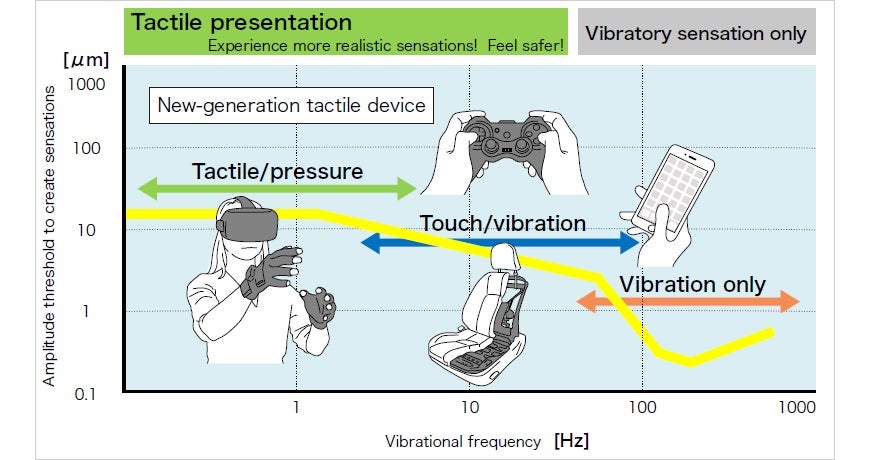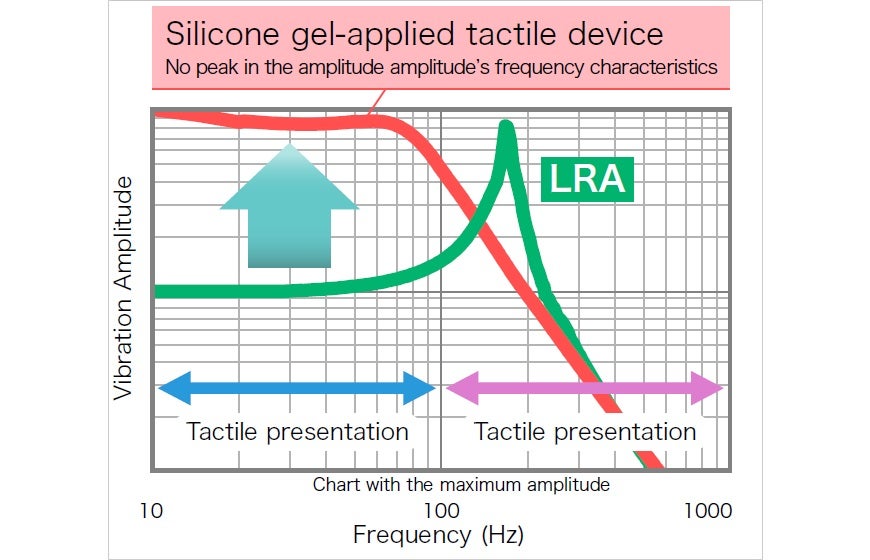Future Technologies
New-generation Tactile Devices that Reproduce Realistic Sensations in the Metaverse
Tactile device to use vibration to reproduce tactile sensations
As the virtual reality space, known as metaverse, becomes a topic of conversation in recent years, attention is now focused on how next-generation tactile devices are evolving. Tactile devices, which vibrate to provide the user with feedback, require the user to wear special gloves, etc. to reproduce real-world sensations such as “pressing” and “grabbing.” The devices are expected to significantly improve user experience in the virtual space.
Tactile devices are derived from, among others, the mobile phone’s vibration function whose applications came to include creating, for example, a sense of touching, which makes smartphones and tablet devices vibrate when the user holds down an icon, etc., and a tactile sensation feedback on a copy machine’s liquid crystal panel on a car air-conditioner’s operation dial.

Among various products, tactile devices’ characteristics are incorporated especially well in gaming controllers. By reproducing, among others, the shock of shooting a gun and the sensation of driving a racing car, tactile devices significantly contribute to enhancing the sense of immersion into the gaming world.
Using one-of-a-kind silicone gel technology to reproduce more realistic sensations
Creating a realistic sensation with a tactile device requires technologies to reproduce subtle and various tactile and kinesthetic senses not only by generating simple vibrations but by covering lower frequency ranges as well. Conventionally, tactile devices would use a plate spring to generate such vibrations, but this method had an issue with suppressing resonance, making it difficult to reproduce a kinesthetic sense at a low-frequency range.
Creating a realistic sensation with a tactile device requires technologies to reproduce subtle and various tactile and kinesthetic senses not only by generating simple vibrations but by covering lower frequency ranges as well. Conventionally, tactile devices would use a plate spring to generate such vibrations, but this method had an issue with suppressing resonance, making it difficult to reproduce a kinesthetic sense at a low-frequency range.


Reproducing realistic sensations with new-generation tactile devices
Next-generation tactile devices are highly compatible with the metaverse, and products and services that look as if they were from the world of science fiction will become available as XR (cross reality) technology advances. In the world of games in the future, for example, consumers may be able to wear tactile gloves and boots together with a head-mounted display, and enjoy feeling as if they were professional athletes. The time is coming for people to be able to enjoy purchasing fashion items by visiting shops and touch items on sale to see how they feel, all in the virtual space. Such devices are expected to be applied not just to the world of entertainment but to medical and other fields as well. As tactile devices evolve, many things will become possible, such as doctors performing palpation on their patients’ bodies by remote control.
Nidec stays committed to developing new-generation tactile devices by seeking more realistic sensations.
